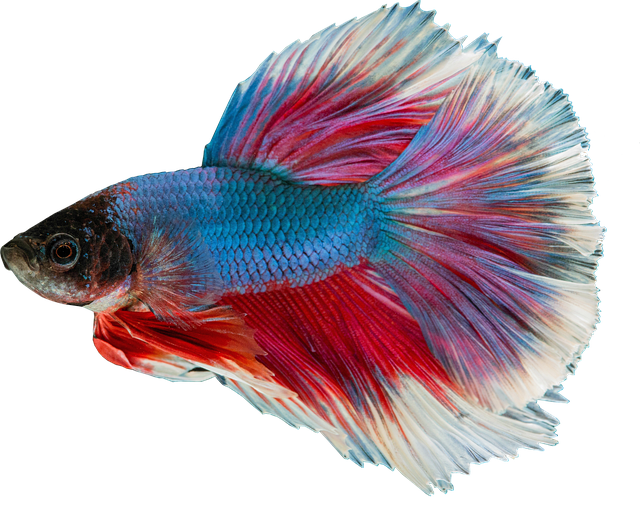Designing a driftwood aquarium requires selecting pieces with unique shapes and textures that align with your aesthetic, ensuring they fit within your aquarium's size and water flow dynamics, and choosing types suitable for its biotype. Driftwood adds natural beauty, diverse textures, and hiding spots for fish while enhancing aquascaping themes. Strategically position larger and smaller driftwood pieces to create focal points and harmonize with the aquarium's scale and inhabitants' swimming patterns, transforming your aquatic space into a captivating natural wonder.
Transform your underwater oasis with expert aquascaping techniques using driftwood. This guide explores everything from choosing the perfect driftwood to create a stunning, balanced layout that complements your fish and plants. Learn step-by-step implementation, essential maintenance tips, and gain insights into preserving your beautiful driftwood aquarium layouts over time.
Choosing the Right Driftwood for Your Aquarium
When designing an aquarium, selecting the right driftwood is a key element in creating stunning driftwood aquarium layouts. Look for pieces with unique shapes and textures that complement your desired aesthetic. The size and weight of driftwood can vary greatly, so consider the dimensions of your aquarium to ensure it fits well without obstructing water flow or causing damage.
Choose driftwood that is suitable for your aquarium’s biotype and water conditions. Some species are more resilient than others, with certain woods better suited for freshwater or saltwater environments. Additionally, consider the wood’s natural oils and resins, which can impact water quality and clarity. Researching different types of driftwood will help you find pieces that enhance both the visual appeal and ecological balance of your aquarium.
– Types of driftwood and their unique characteristics
Driftwood adds texture, visual interest, and natural beauty to aquarium setups, making it a popular choice for aquascapers. When selecting driftwood for your aquarium layouts, consider its type as each variety offers distinct characteristics. For instance, Balsam driftwood is known for its striking red-brown color and delicate branches, ideal for smaller aquariums or creating airy, forest-like scenes. In contrast, Juniper driftwood boasts a vibrant green hue with a rougher texture, providing a unique aesthetic to larger tanks. Its coarse surface offers excellent hiding spots for fish, especially in community aquariums.
Additionally, Mopwood stands out with its distinctive white or cream-colored branches that create an ethereal, snow-like effect. This type of driftwood is versatile and complements various aquarium themes. Moreover, the size and shape of driftwood pieces vary, allowing you to incorporate them in diverse ways into your aquascaping designs, from central focal points to backdrop accents, enhancing the overall ambiance and visual appeal of your aquatic landscape.
– How to select driftwood that complements your fish and plants
When selecting driftwood for your aquarium, consider its species and appearance to complement your fish and plants. Different types of driftwood offer unique textures and colours that can enhance your aquascaping designs. For example, popular choices like Irish Moss or Oak driftwood provide distinct visual appeal with their varied branching patterns and earthy tones. These natural elements not only add depth but also create hiding spots for fish, promoting a healthier environment.
To integrate driftwood effectively into your aquarium, think about its placement relative to plants and fish activity zones. Strategically positioning larger pieces at the back or sides can serve as focal points, while smaller branches scattered throughout provide a more naturalistic look. Ensure that the size and shape of the driftwood complement the scale of your aquarium and the swimming patterns of your aquatic residents for a harmonious driftwood aquarium layouts.
Designing Drifwood Aquarium Layouts
Creating a stunning driftwood aquarium layout is an art that can transform your aquatic space into a captivating natural wonder. Expert aquascapers utilize driftwood as a central element to craft unique and aesthetically pleasing underwater landscapes. The key lies in arranging the wood in a way that mimics nature’s organic shapes and structures, allowing plants and aquatic life to flourish.
By carefully considering the size and shape of your aquarium, you can design layouts that range from serene forest-like scenes to dramatic cliff formations. Drifting pieces of driftwood can create depth and texture, while strategically placed rocks and plants add a sense of realism and habitat for fish. These driftwood aquarium layouts offer both visual appeal and ecological balance, making them a popular choice among aqua enthusiasts looking to create a captivating underwater ecosystem.
Aquascaping with driftwood is a creative way to transform your aquarium into a captivating underwater landscape. By understanding different types of driftwood and their suitability for various fish and plant species, you can craft stunning driftwood aquarium layouts. These designs not only enhance the aesthetic appeal but also provide a natural and balanced environment for your aquatic friends. With some creativity and knowledge, you can turn your aquarium into a true work of art that captivates both casual viewers and avid aquariists alike.
